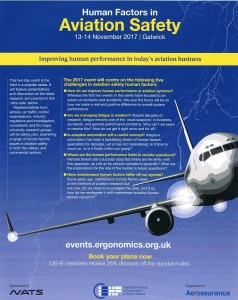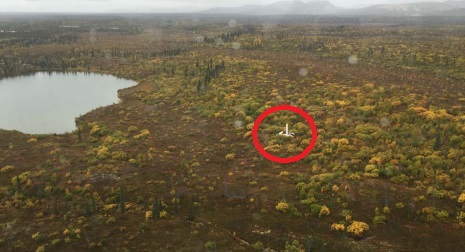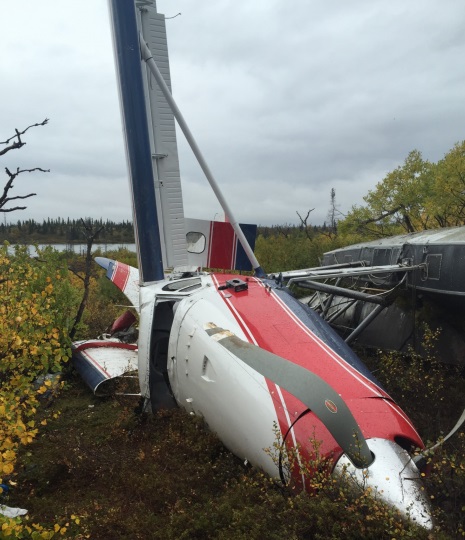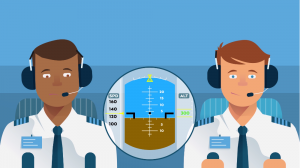Deadly Combination of Misloading and a Somatogravic Illusion: Alaskan Otter
A turbine powered de Havilland DHC-3 Otter floatplane, N928RK, operated by Rainbow King Lodge, suffered a Loss of Control – Inflight (LOCI-I) shortly after take off on 15 September 2015 near Iliamna, Alaska. Three of the 10 persons on board were killed and 5 received serious injuries.
In their investigation report US National Transportation Safety Board (NTSB) explain that the aircraft…
…was being used to transport sport-fishing clients and guides to a remote area for a day of salmon fishing.
The pilot said that because the passengers “were familiar” with flying in the aircraft he did not conduct the mandatory briefing before they departed at 0605 Local Time.
According to the US Naval Observatory Astronomical Applications Department, civil twilight began at 0706, and sunrise was at 0748.
[A] lodge employee reported it was dark but that he was still able to watch the airplane as it started its westerly takeoff run.
The pilot stated that, during takeoff, he looks outside the airplane and does not focus on his instruments. He said the lack of light caused him to lost visual cues after the airplane became airborne.
The witness said that…
….after liftoff, the airplane began to climb and then descended, and the floats subsequently struck the water’s surface. The airplane then became airborne again and veered right, but he lost sight of it behind an area of rising terrain.
According to the automatic dependent surveillance-broadcast [ADS-B] data, the airplane then began a gradual right turn before reaching a maximum altitude of 175 ft above the water.

Flight Path of Rainbow King Lodge de Havilland Canada DHC-3T Texas Turbine Otter N928RK Based on FAA ADS-B Data (Credit NTSB)
The accident again demonstrates the great value of good ADS-B coverage and recording in accident investigation.
The airplane then descended toward the water’s surface, flew low over the water and terrain, and then climbed briefly again before it impacted terrain.
Accident Site of Rainbow King Lodge de Havilland Canada DHC-3T Texas Turbine Otter N928RK (Credit NTSB)
Rainbow King Lodge had no procedures in place or equipment available for calculating preflight weight and balance.
[The Pilot] stated that the Otter typically flew with a load of about six people [and]…he did not weigh the cargo nor did he document any weight and balance calculations. When asked how he calculated the airplane’s weight and balance before departure, the pilot said he “guesstimated” it.
A postaccident weight and balance study using the passenger weights, weighed cargo, and fuel load showed that the airplane exceeded its maximum gross weight of 8,367 lbs by about 508.6 lbs and that the center of gravity (CG) was 4.08 inches aft of the aft CG limit. Data from the airplane’s automatic dependent surveillance-broadcast (ADS-B) showed that the airplane was at or below the stall speeds listed in the airplane flight manual during both the initial and second climbs.
The ADS-B data show that, because the pilot failed to determine the airplane’s actual preflight weight and CG and loaded and operated outside of the weight and CG limits, the airplane did not attain a proper airspeed to climb, and it experienced an aerodynamic stall.
The pilot commented that:
…the owners did not put any pressure on him regarding flights [and] that he was never pressured to fly in weather or fly heavy. It is a competitive industry, and all of the lodges fly to challenging locations. He felt that waiting until there was better ambient light might have helped.
The NTSB add:
There were insufficient external cues available to the pilot to reliably control the airplane, and he was likely experiencing spatial disorientation after takeoff and the subsequent maneuvering.
The FAA’s Pilot’s Handbook of Aeronautical Knowledge (FAA-H-8083-25), states:
Spatial disorientation specifically refers to the lack of orientation with regard to the position, attitude, or movement of the airplane in space.
Under normal flight conditions, when there is a visual reference to the horizon and ground, the sensory system in the inner ear helps to identify the pitch, roll, and yaw movements of the airplane. When visual contact with the horizon is lost, the vestibular system becomes unreliable. Without visual references outside the airplane, there are many situations where combinations of normal motions and forces can create convincing illusions that are difficult to overcome.
Potential somatogravic illusions include the head-up illusion where during a forward linear acceleration, such as during takeoff, the pilot perceives that the aircraft’s nose is pitching up. A night takeoff from a well-lit airport into dark conditions (a ‘black hole’) can lead to this illusion. An incorrect response to this illusion would be to push the control column forward to pitch the aircraft’s nose down.
NTSB Probable Cause
The pilot’s decision to depart in dark night, visual meteorological conditions over water, which resulted in his subsequent spatial disorientation and loss of airplane control.
Contributing to the accident was the pilot’s failure to determine the airplane’s actual preflight weight and balance and center of gravity (CG), which led to the airplane being loaded and operated outside of the weight and CG limits and to a subsequent aerodynamic stall.
Safety Resources
Australian Transport Safety Bureau (ATSB) report Aircraft loading occurrences July 2003 to June 2010
The NTSB has previously published: Reduced Visual References Require Vigilance
A short SKYclip on somatogravic illusions is available to watch:
We have previously published:
- Misloading Caused Fatal 2013 DHC-3 Otter Accident, another accident in Alaska where misloading had occurred, published just a few weeks after this accident
- Wait to Weight & Balance – Lessons from a Loss of Control where a misloaded PC-12 had a brief loss of control
- HEMS Black Hole Accident: “Organisational, Regulatory and Oversight Deficiencies” in Canada during a night take-off into darkness
- All Aboard CFIT: Alaskan Sightseeing Fatal Flight on another Alaskan Otter accident with deeper cultural issues, but again risking the lives of tourists
- UPDATE 9 February 2018: The Irish AAIU explain how during preparations for departure from Dublin of ATR72-212 EI-FAV on 23 July 2015 the passenger baggage was placed in the aft aircraft baggage hold instead of the forward baggage hold. “The aircraft departed with the Centre of Gravity outside approved loading limits. The aircraft subsequently landed at its destination where the loading error was discovered”.
- UPDATE 13 October 2018: Low Viz Helicopter Accident, Alaska
- UPDATE 20 November 2019: Unalaska Saab 2000 Fatal Runway Excursion: PenAir N686PA 17 Oct 2019
- UPDATE 25 April 2020: Fatal R44 Loss of Control Accident: Overweight and Out of Balance
- UPDATE 23 August 2020: NTSB Investigation into AW139 Bahamas Night Take Off Accident
- UPDATE 16 May 2021: Cessna 208B Collides with C172 after Distraction
Aerossurance was pleased to sponsor the 2017 European Society of Air Safety Investigators (ESASI) 8th Regional Seminar in Ljubljana, Slovenia on 19 and 20 April 2017. ESASI is the European chapter of the International Society of Air Safety Investigators (ISASI).
Aerossurance is pleased to be supporting the annual Chartered Institute of Ergonomics & Human Factors’ (CIEHF) Human Factors in Aviation Safety Conference for the third year running. We will be presenting for the second year running too. This year the conference takes place 13 to 14 November 2017 at the Hilton London Gatwick Airport, UK with the theme: How do we improve human performance in today’s aviation business?






Recent Comments